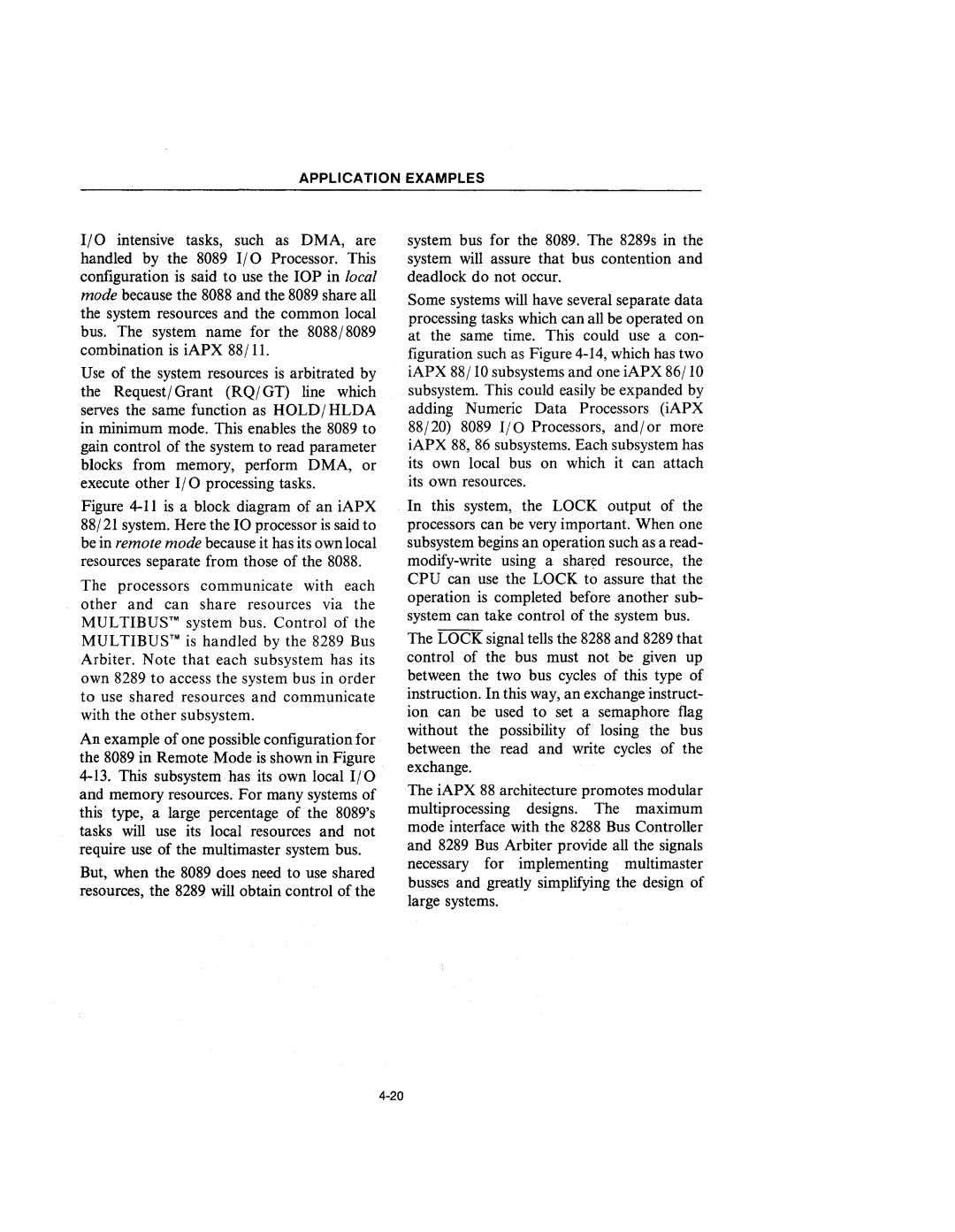
APPLICATION EXAMPLES
I/O intensive tasks, such as DMA, are handled by the 8089 I/O Processor. This configuration is said to use the lOP in local mode because the 8088 and the 8089 share all the system resources and the common local bus. The system name for the 8088/8089 combination is iAPX 88/ 11.
Use of the system resources is arbitrated by the Request/ Grant (RQ/ GT) line which serves the same function as HOLD/HLDA in minimum mode. This enables the 8089 to gain control of the system to read parameter blocks from memory, perform DMA, or execute other I/O processing tasks.
Figure 4-11 is a block diagram of an iAPX 88/21 system. Here the 10 processor is said to be in remote mode because it has its own local resources separate from those of the 8088.
The processors communicate with each other and can share resources via the MULTIBUS™ system bus. Control of the MULTIBUS™ is handled by the 8289 Bus Arbiter. Note that each subsystem has its own 8289 to access the system bus in order to use shared resources and communicate with the other subsystem.
An example of one possible configuration for the 8089 in Remote Mode is shown in Figure
But, when the 8089 does need to use shared resources, the 8289 will obtain control of the
system bus for the 8089. The 8289s in the system will assure that bus contention and deadlock do not occur.
Some systems will have several separate data processing tasks which can all be operated on at the Bame time. This could use a con- figuration such as Figure
In this system, the LOCK output of the processors can be very important. When one subsystem begins an operation such as a read-
The LOCK signal tells the 8288 and 8289 that control of the bus must not be given up between the two bus cycles of this type of instruction. In this way, an exchange instruct- ion can be used to set a semaphore flag without the possibility of losing the bus between the read and write cycles of the exchange.
The iAPX 88 architecture promotes modular mUltiprocessing designs. The maximum mode interface with the 8288 Bus Controller and 8289 Bus Arbiter provide all the signals necessary for implementing multimaster busses and greatly simplifying the design of large systems.
